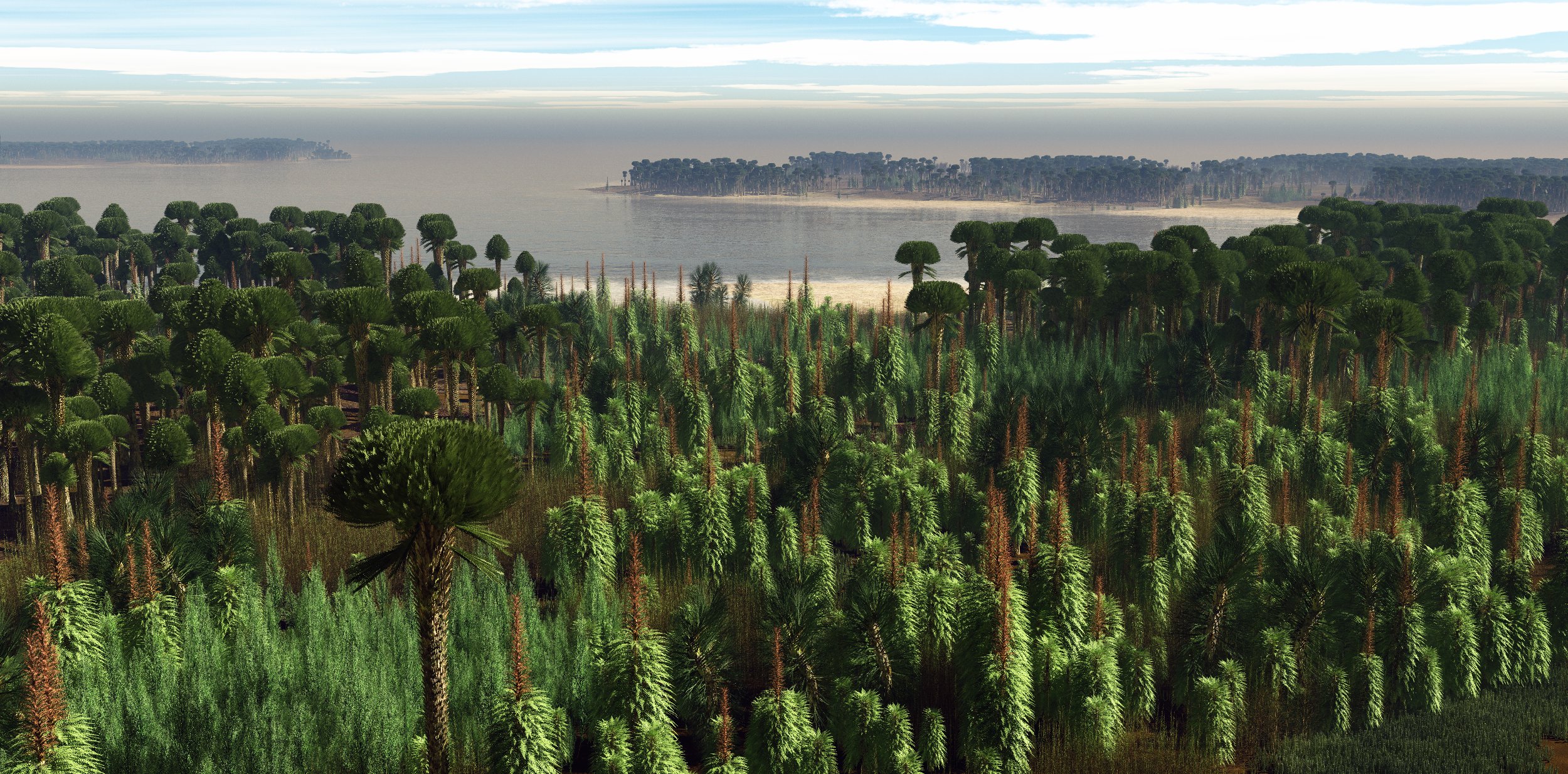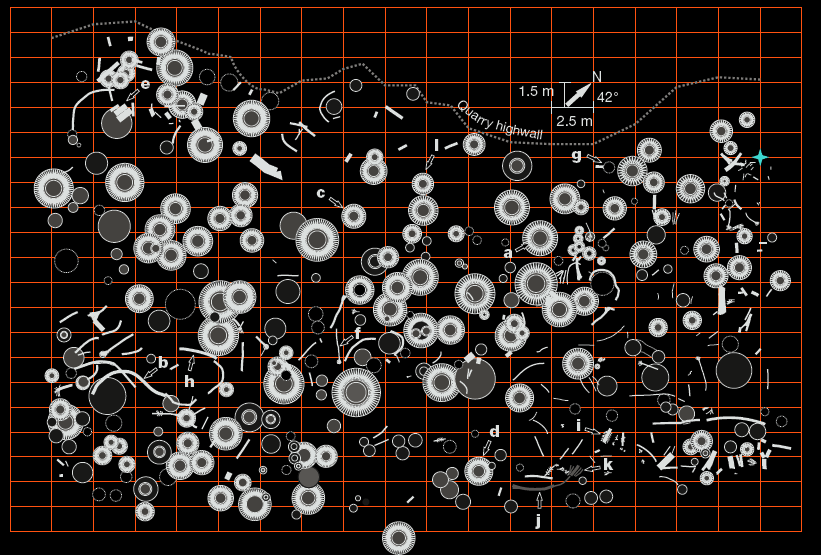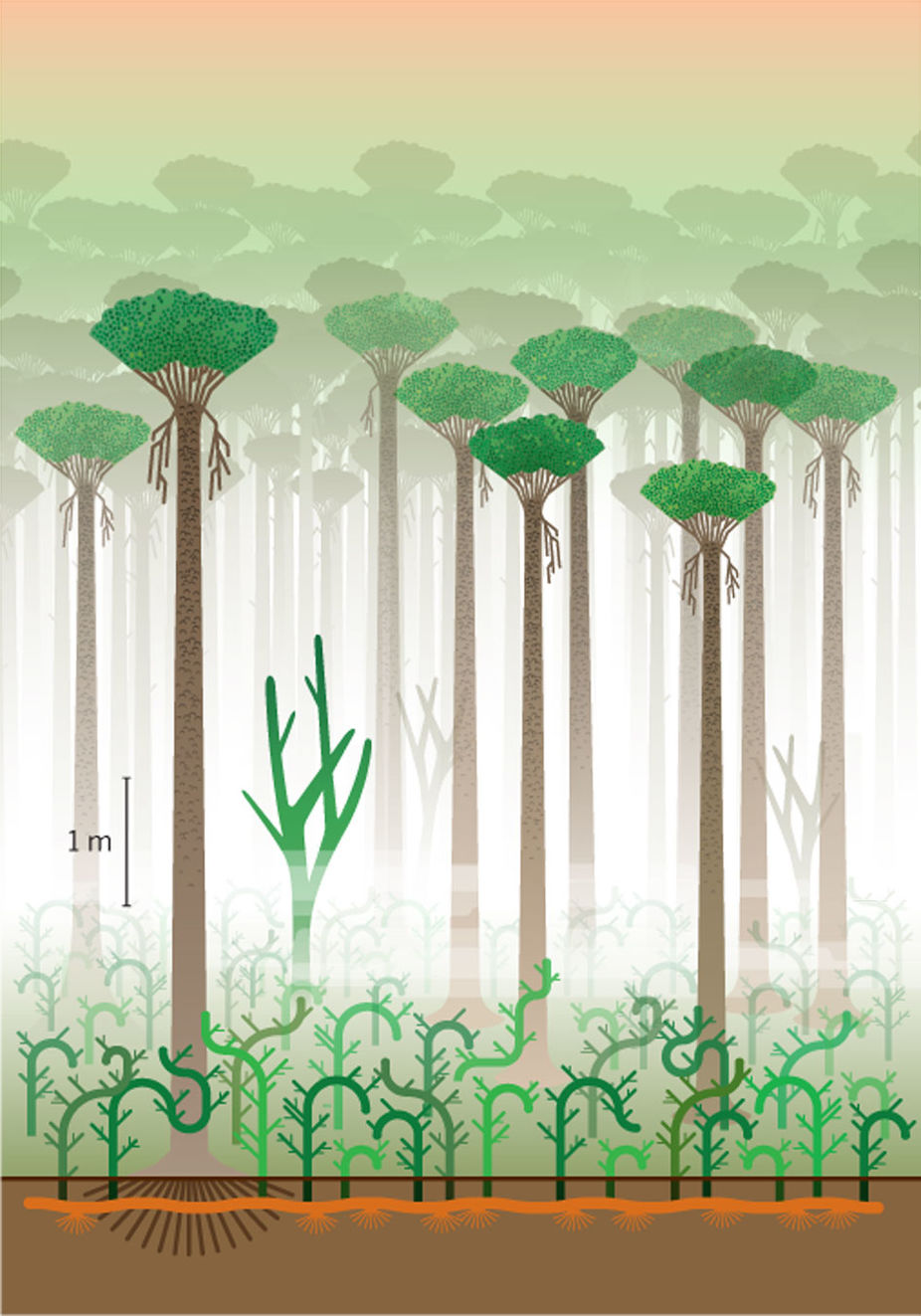Spectacularly preserved plant remains unearthed at the Riverside Quarry site in Gilboa, NY date from the Middle Devonian period, approximately 390 million years ago. The site of the “oldest fossil forest” was found in the 1920s. Here in this playlist you can watch six videos highlighting the findings. The videos feature two paleontologists William Stein of the Binghamtom University and Christopher Berry of Cardiff University.
The Devonian period was a hugely transformational time for land plants evolving towards forest ecosystems. Check out the artist Mikko H. Kriek’s representation of Middle Devonian forests of Lindlar, Germany as displayed in Landes Museum:
A rare opportunity during the two week repair period of the Gilboa Dam in 2010 allowed paleontologists to clear an area of 1200 square meters which harbored a total of 486 objects including root mounds, horizontal stems and aerial plant fragments. Until 2010, the only tree in Gilboa forest were thought to be Eospermatopteris-Wattieza. Now we know that there are three major woody plant components of the forest:
[1] Eospermatopteris
[2] Tetraxylopteris
[3] Lycopsids
The first two types of trees are best preserved a the Gilboa site. The Eospermatopteris trees (taller aboveground trees) are related to the ferns. The rhizomatous aneurophytalean progymnosperms called Tetraxylopteris grew underground and sprouted aboveground (see the simplified drawing at the bottom of this post). The third tree types appear to be lycopsid-like trees of unknown species.
For a very long time we knew Gilboa trees from their stumps only. We had no idea what their crowns looked like. In 2007, two fossils found in South Mountain, New York enabled reconstruction of the crown of one of the dominant Eospermatopteris tree fossils in Gilboa. These trees from the Frasnian stage belong to the extinct genus Cladoxylopsida related to ferns. The Eospermatopteris-Wattieza had a trunk more than six meters in height. The crown possessed leafless branches that botanists call fronds. These were short-lived and were continuously shed as the plant grew.
Catskills, Venezuela and Morocco may seem worlds apart but during the Devonian they were near neighbors and shared a temperate climate. For this reason not surprisingly another species belonging to the genus of the second dominant tree Tetraxylopteris also was described at a locality called Campo Chico Formation, north-west Venezuela. Aneurophytalean progymosperms were also described from Immouzzerdu-Kandar in central Morocco. As the following video visualizes, north America was in southern hemisphere during the Devonian:
Colorado and its place in Global Tectonics: Cambrian to Present from Interactive Geology Project on Vimeo.
The third tree type found in Gilboa is an undescribed Lycopsid. Today the lycophytes are a small and inconspicuous group of plants. However they appeared beginning from the Silurian (the period preceding the Devonian) and in the Carboniferous period they reached enormous sizes forming forests with canopies more than 35 meters tall. Devonian Lycopsid tree fossils discovered in Norway provide evidence that this plant group played a massive role in carbon sequestration during that time.
The club mosses (Lycopodiales) are usually evergreen plants. Their spores have been used for flash photography since they are highly flammable when camera technology was in its infancy. One common form Selaginella moellendorfii, has been used as an evolutionary milestone species whose whole genome has been sequenced and used as a reference genome for plant evolutionary studies. The most significant feature of lycophytes are microphylls, a kind of leaf with a single unbranched vein. Microphyll has evolved independently from the megaphyll leaves of other vascular plants.
The Devonian transition into a forested world had huge implications. Canopies intercepted and slowed down rainfall. Roots stabilized soils and enabled hydrological birth of rivers. Evapotranspiration through the vascular xylem tissues made water cycling more dynamic. Fossils found in China also shed light to the growth pattern of first trees. Crossections of the woody stems have shown discrete radially-arranged plates of xylem tissues. Apparently as the tree grew the xylem plates were splitting at the bottom. Fascinating stuff!





2 Comments